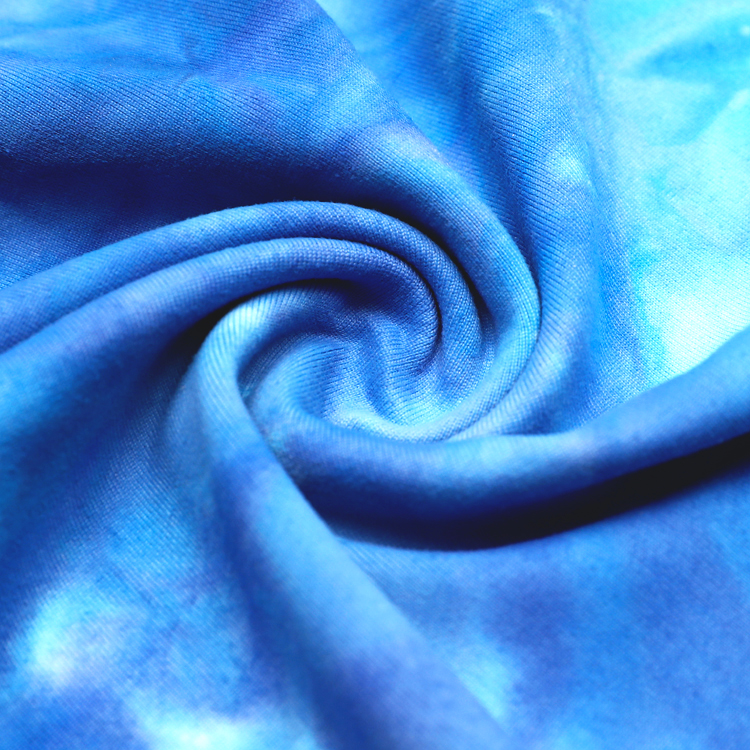Knitted Fabrics are popular for sewing because they are comfortable, stretchy, and durable. They are also popular for their ability to retain shape, even after they are washed. To choose the right knitted fabric for your project, start by learning about the basic stitches. Most knitted fabrics consist of four basic stitches: the knit stitch, purl stitch, tuck stitch, and reverse-knit stitch. Regardless of the type of knit fabric you choose, you're sure to find one that fits your style and budget.
Besides being durable, knit fabrics are breathable and stretchy, which make them an excellent choice for sportswear and athletic clothing. Another benefit of knitted fabrics is their simplicity, making them more economical than their woven counterparts. There are two types of knitting, weft and twisted weft. Both are soft and stretchy, and can be made either by hand or machine. Weft knitted fabric is the most common type of knit fabric.

Most knitted fabric is made of two different types of yarns: wool and cotton. The wool yarns are twisted so that they fit perfectly. The knitted fabrics are also durable, which means they can be washed without shrinking. If you want to wear your knit garment, consider wearing it on a chilly day. You'll feel warm and cozy, and your skin won't suffer from the dry heat.
There are several types of knitted fabrics available. Most of them are made of one or more yarns and are produced by interlocking the loops. The yarns are stitched together, and the stitches make the fabric stretchy. For a warm sweater, it's advisable to wear one with a hood. Unlike woven fabrics, knitted fabrics are a great choice for winters, when temperatures drop.
When shopping for a knitted fabric, keep in mind that it will stretch back to its original shape. Its structure is stable and it can be shaped to fit you perfectly. It can be used for tailored applications. For instance, a t-shirt is a knitted fabric, while a knitted fabric is woven. When you buy a sweater, check the label. The label should be printed in the correct size and style.
A knitted fabric is one of the most flexible materials. This material can stretch up to 100% of its original length, and recovers to its original dimensions. It is often used for clothing in sportswear and t-shirts. However, it can be stiff, so it is important to check with your manufacturer before purchasing. These fabrics should be resistant to abrasion and staining. They should not be bleached or irritated.
A knitted fabric has several different types of edges. Its initial edges are called cast-on edges, while the final edges are called bound/cast-off. The side edges of a knitted fabric are known as selvages. They are the side edges of the fabric. They are usually used for a shirt, but they can also be used for jeans. When knitting a garment, it is important to choose a fabric that has the best possible finish.
There are three basic types of knitted fabrics: sweater, interlock knit, and lace knit. The fiber content of a knitted fabric is the same as its non-woven counterpart. The two types can differ in appearance, but the same quality will be produced. In terms of texture, there are many differences between these two types of materials. Depending on what type of fabric you're looking for, you can find it with a variety of different fibers.
The basic type of knitted fabric is made from two different types of yarns. A double-knitted fabric has one single row of yarn. Its elasticity increases in the direction of the woven fibers. The difference between a plain-float and a plain-tuck fabric is the woven structure. In addition to the weave, a knitted fabric is also called a jersey. The fibers in this type of material are arranged in V-shaped patterns.
High-stretch knitted fabrics are made of filament yarns. These fabrics are typically plain and have a design with vertical wales or crosswise courses. They are most commonly used in technical textiles and are often used in composite materials. These types of textiles are also used in a variety of industrial applications. The characteristics of these textiles will depend on the type of material and its use. A fabric that is woven with a thicker fiber will have a higher stretch ratio than one made of thin, but it will have less.
